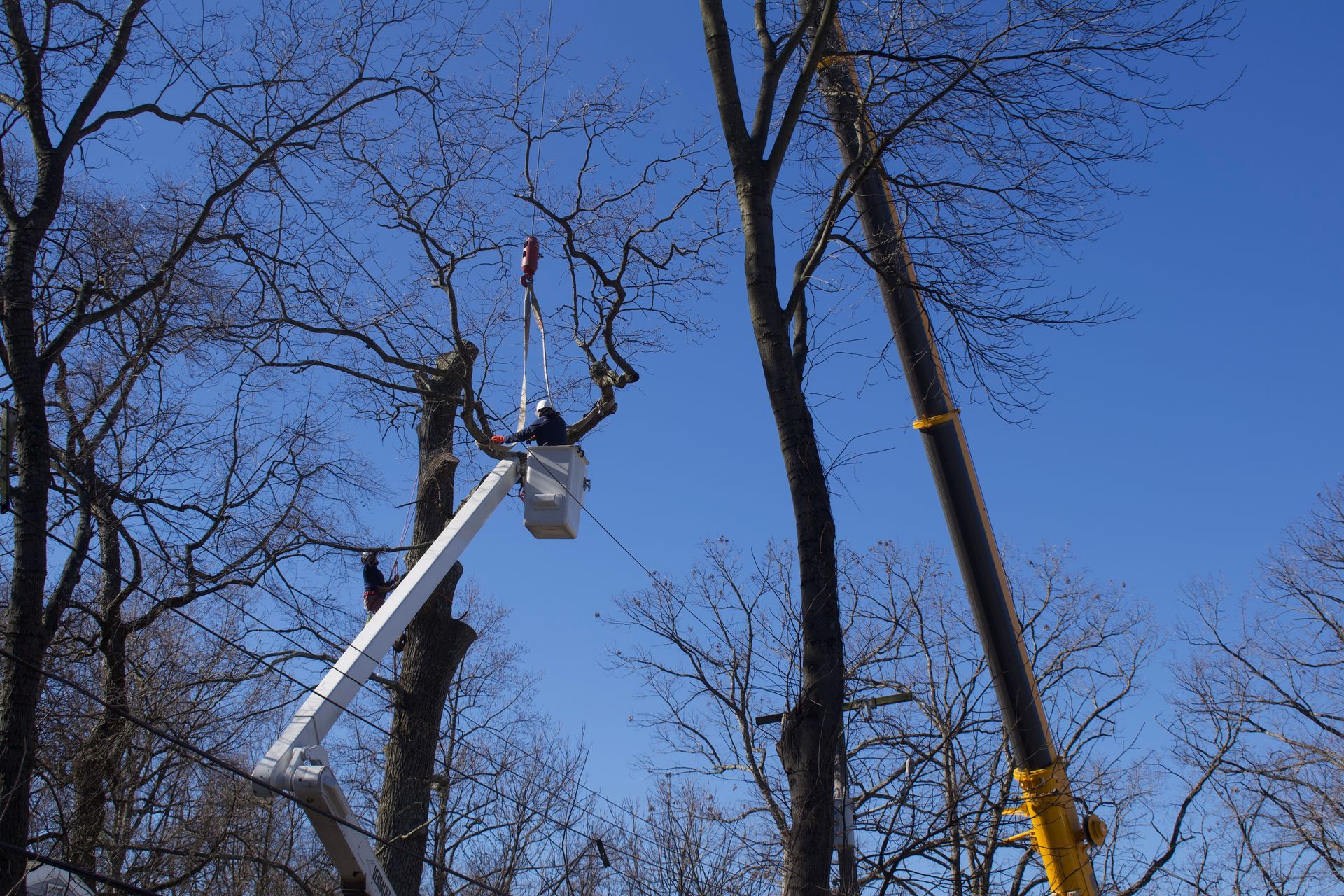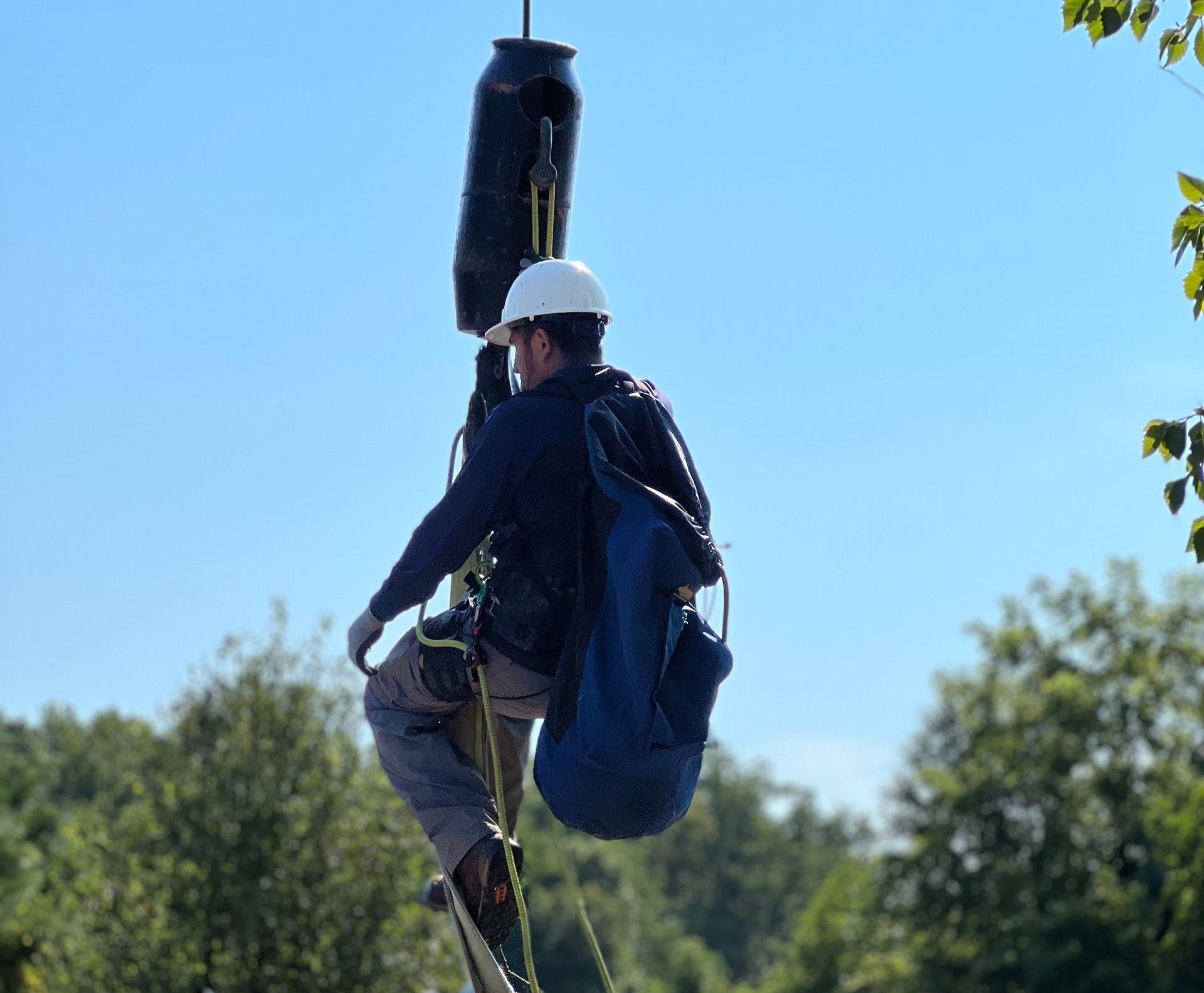Tree Pruning in Upper Marlboro MD & surrounding areas
Tree pruning is an essential practice for maintaining the health, aesthetics, and safety of trees. At Milton's Tree Care Services, we take pride in our advanced techniques for
tree pruning in Upper Marlboro, MD, ensuring that each tree receives the care it deserves. Let's delve into the methods we employ to keep your trees in optimal condition.
Proper Pruning Cuts
Before we delve into the nuances of tree pruning, it's essential to grasp the significance of making proper pruning cuts. Picture a tree's branches as its arteries – cutting them improperly is akin to a botched surgery. To avoid unnecessary stress and potential harm to the tree, our arborists adhere to a set of principles when making pruning cuts:
- Clean Cuts: Every cut is precise, clean, and free from jagged edges. This ensures rapid healing and reduces the risk of infection.
- Angle Matters: The angle at which a branch is cut influences the direction of new growth. Strategic angles promote healthy growth patterns and prevent the accumulation of water.
- Minimal Damage: Arborescent tissue is delicate – excessive damage during pruning can compromise the tree's structural integrity. Arborists in Upper Marlboro prioritize minimal tissue removal to maintain the tree's health.
Considerations for Branch Size and Position
Not all branches are created equal – their size, position, and function dictate the pruning approach required. In Upper Marlboro, arborists meticulously assess each branch before applying their shears:
- Size Matters: Large branches require careful consideration. Improper pruning of sizable limbs can lead to structural weakness and pose safety hazards. Upper Marlboro arborists employ specialized techniques, such as drop-crotch pruning, to safely manage large branches.
- Strategic Removal: Branch position plays a pivotal role in a tree's health and aesthetics. Arborists strategically remove branches that impede airflow, obstruct sunlight, or pose risks to nearby structures.
- Balancing Act:
Pruning isn't just about removing unwanted growth – it's about striking a balance between preservation and enhancement. Upper Marlboro arborists aim to preserve the tree's natural shape while promoting optimal growth patterns.

We will get back to you as soon as possible.
Please try again later.
Pruning Young Trees for Structure and Form
The future health and vitality of a tree hinge on its formative years. In Upper Marlboro, arborists invest time and expertise in nurturing young trees to ensure they grow into majestic specimens:
- Establishing Framework: Young trees are akin to blank canvases – their formative years set the stage for their future growth. Arborists carefully shape the tree's framework by selectively pruning branches to encourage desirable growth habits.
- Preventing Compromise: Poorly managed growth during a tree's infancy can lead to a lifetime of issues. Upper Marlboro arborists proactively address structural weaknesses and competing leaders to prevent future complications.
- Encouraging Resilience:
By instilling proper growth habits early on, arborists in Upper Marlboro equip young trees with the resilience to withstand environmental stresses and thrive in their urban habitat.
As you can see, our techniques for tree pruning are rooted in a combination of expertise, precision, and environmental stewardship. By carefully assessing each tree's needs, employing selective pruning methods, and prioritizing safety and sustainability, we ensure that your trees receive the highest quality care possible.
Rely on our team of tree experts to handle all your tree care needs with precision and professionalism. We specialize in a wide range of services, including
tree trimming, cutting,
tree removal,
stump removal and grinding, as well as
emergency tree removal. Our
professional arborists are here to ensure your trees remain healthy, strong, and well-maintained. Trust us to not only enhance the beauty of your property but also to keep it safe and secure for years to come. Let us take care of your trees so you can enjoy a worry-free outdoor space!

Understanding the Art of Tree Pruning
Tree pruning is both a science and an art. It involves careful assessment, strategic planning, and precise execution to ensure the health, aesthetics, and safety of trees. One of the fundamental aspects of tree pruning is understanding the different types of pruning methods available. In this guide, we'll explore the various types of tree pruning and their significance in maintaining the vitality and beauty of trees.
-
Crown Thinning
Crown thinning is a pruning technique aimed at reducing the density of a tree's foliage without altering its overall shape or size significantly. By selectively removing smaller branches throughout the crown, adequate sunlight penetration and air circulation can be promoted, which are essential for the tree's health. This method also helps in reducing the risk of disease by minimizing moisture retention within the canopy.
-
Crown Raising
Crown raising involves the removal of lower branches of a tree to provide clearance for structures, vehicles, pedestrians, or simply to improve visibility. This pruning method is commonly employed in urban areas where trees often interfere with overhead wires or obstruct pathways. Proper crown raising not only enhances safety but also enhances the aesthetic appeal of the tree by exposing its trunk and creating a more open canopy.
-
Crown Reduction
Crown reduction is a technique used to reduce the overall size and spread of a tree's canopy. It involves selectively pruning the outermost branches to alleviate stress on the tree, particularly in cases where the tree has outgrown its space or poses a risk to nearby structures. While crown reduction should be performed with caution to avoid excessive stress on the tree, when done correctly, it can help maintain the tree's structural integrity while preserving its natural form.
-
Deadwood Removal
Deadwood removal is the process of eliminating dead, dying, or diseased branches from a tree. Deadwood not only detracts from the tree's appearance but also poses safety hazards as it can fall unexpectedly. By regularly removing deadwood, the risk of property damage or personal injury caused by falling branches is significantly reduced. Additionally, eliminating deadwood can promote overall tree health by preventing the spread of diseases and pests.
-
Selective Pruning
Selective pruning involves the targeted removal of specific branches to address structural weaknesses, promote balanced growth, or enhance the tree's aesthetic appeal. This method requires careful assessment of the tree's architecture and growth patterns to determine which branches should be pruned and which should be retained. Selective pruning is often performed in conjunction with other pruning techniques to achieve optimal results.
Tree pruning is a vital aspect of tree care that requires expertise, precision, and a deep understanding of arboriculture principles. By employing the appropriate pruning techniques, arborists can enhance the health, safety, and beauty of trees, ensuring their longevity for generations to come. Whether it's crown thinning to improve light penetration, crown raising to enhance visibility, or selective pruning to address structural issues, each method plays a crucial role in maintaining the vitality and sustainability of our urban and natural landscapes.

Best Times Of The Year For Tree Pruning
Pruning trees isn't just about snipping away at branches randomly; it's a delicate art that requires timing and technique. However, seasons dance between the chill of winter, the bloom of spring, the heat of summer, and the golden hues of autumn, understanding the best times for pruning is crucial for tree health and vitality. Pruning is a task best done with the seasons in mind. Each time of year offers unique advantages and considerations for tree care.
-
Winter (Late Dormancy)
The dormant season, typically from late fall to early spring, is an ideal time for pruning deciduous trees in Upper Marlboro. Without leaves, it's easier to see the tree's structure and make precise cuts. Winter pruning also minimizes the risk of spreading diseases, as pathogens are less active during this time.
-
Spring (After Flowering)
Spring brings new growth and vitality to trees. Once flowering has occurred, usually in late spring, it's safe to prune many trees, including fruit trees and ornamentals. However, be cautious with spring-flowering species, as pruning too late can remove flower buds for the next season.
-
Summer (Limited Pruning)
While summer pruning is generally discouraged for most trees due to the risk of stressing them during the growing season, some exceptions exist. Light pruning to remove dead or damaged branches or to shape young trees may be undertaken in summer.
-
Fall (Minimal Pruning)
Fall is not typically recommended for major pruning activities in Upper Marlboro. However, it can be a suitable time for minor maintenance pruning, such as removing dead or diseased branches or shaping trees before winter.
Pruning is an essential aspect of tree care that offers numerous benefits, including improved health, safety, aesthetics, and fruit production. Moreover, understanding the best times to prune trees is crucial for maximizing these benefits while minimizing risks. By following seasonal guidelines and practicing proper pruning techniques, homeowners can nurture thriving trees that enhance the beauty and value of their landscapes for years to come.
GET A FREE ESTIMATE TODAY
At Milton's Tree Care Services LLC, we are committed to providing top-quality tree care solutions tailored to your needs. From tree trimming and pruning to safe and efficient tree removal, our experienced team ensures the health and beauty of your landscape. With a focus on safety, professionalism, and customer satisfaction, we handle every job with care and precision. Contact us today to see how we can help maintain or improve your outdoor space!